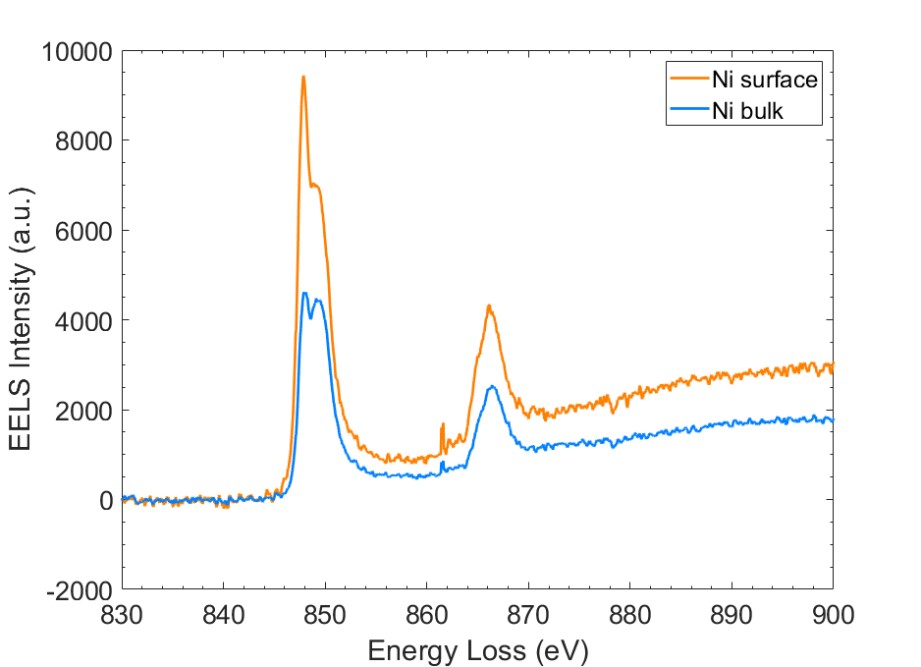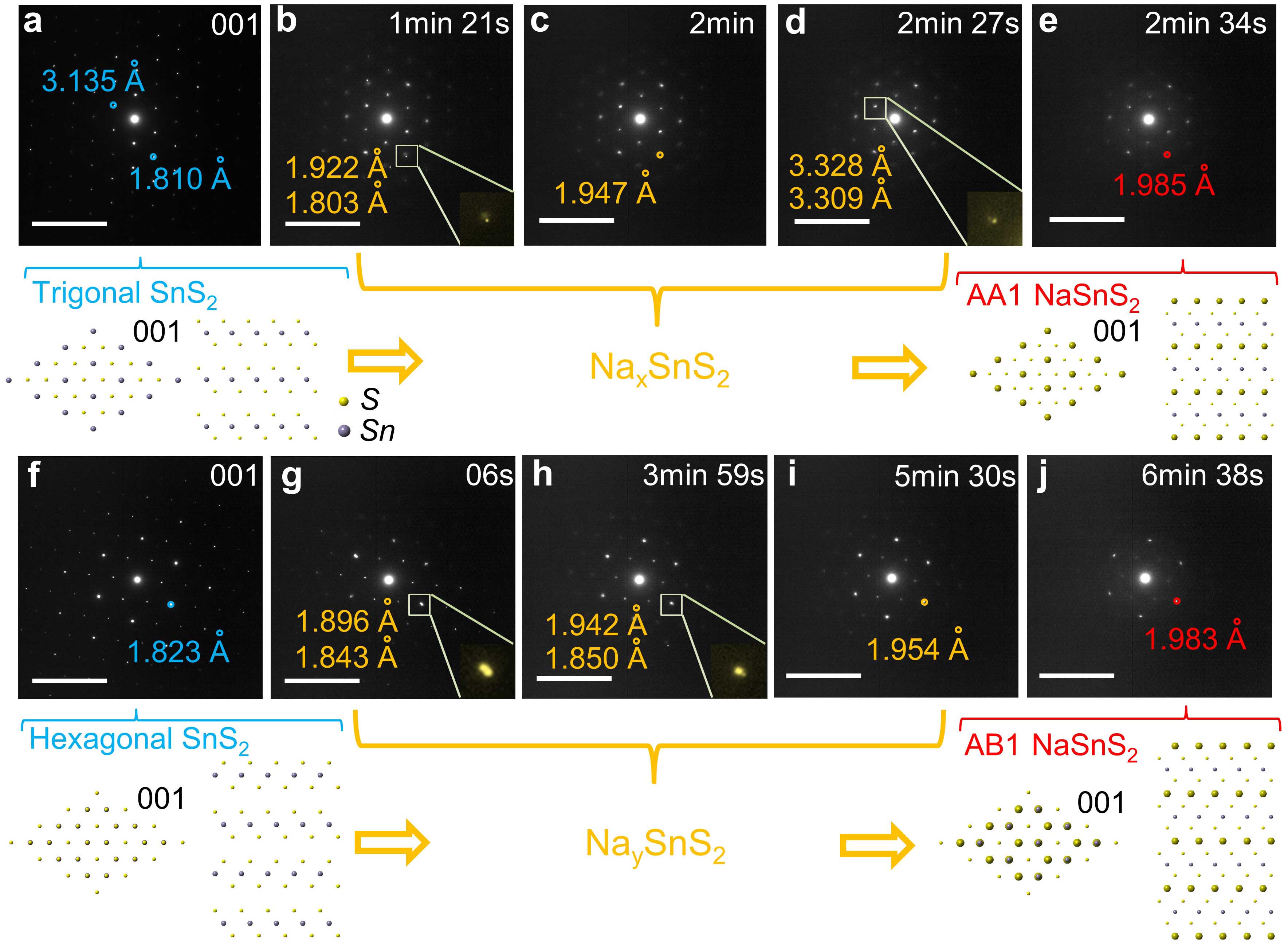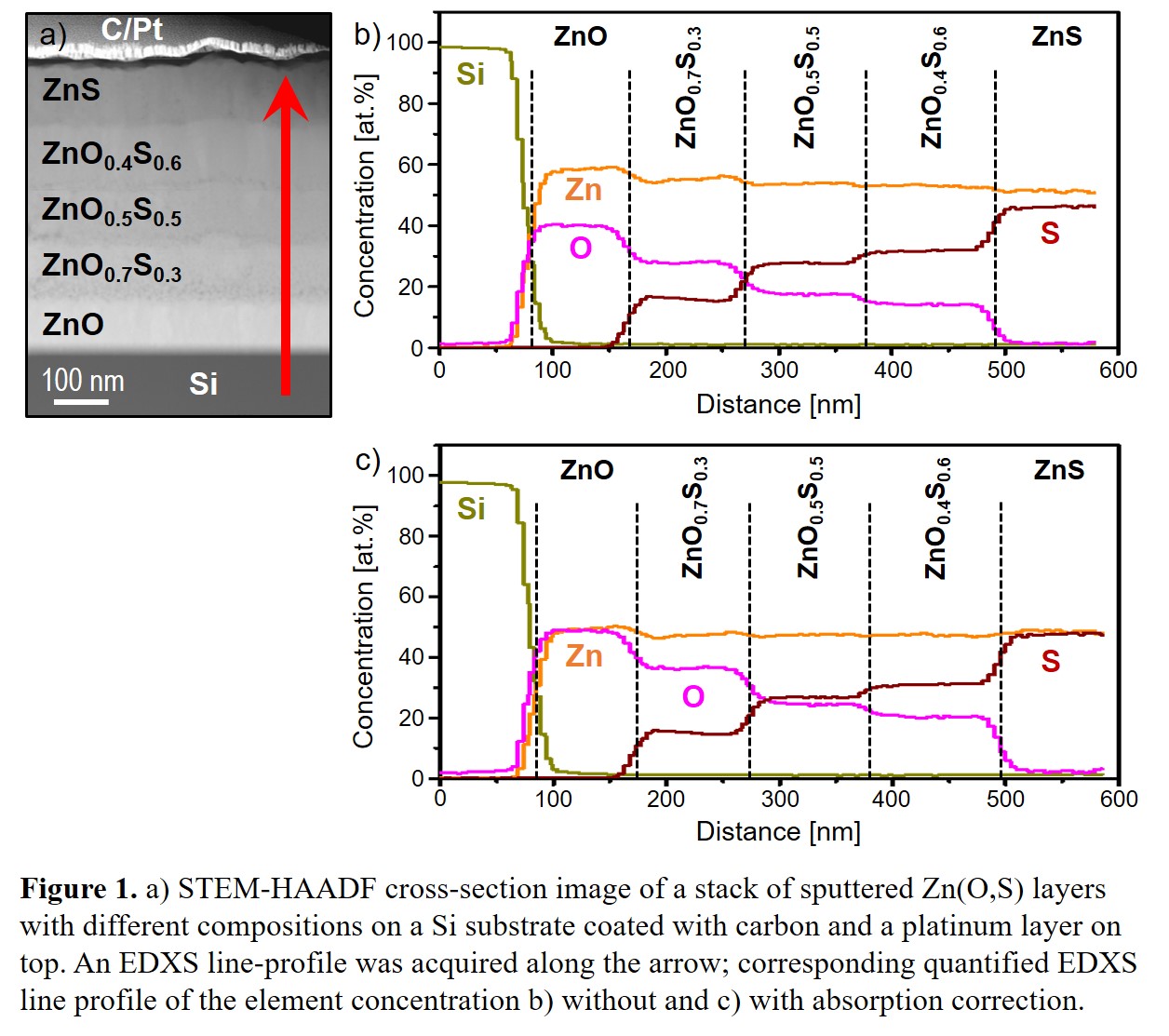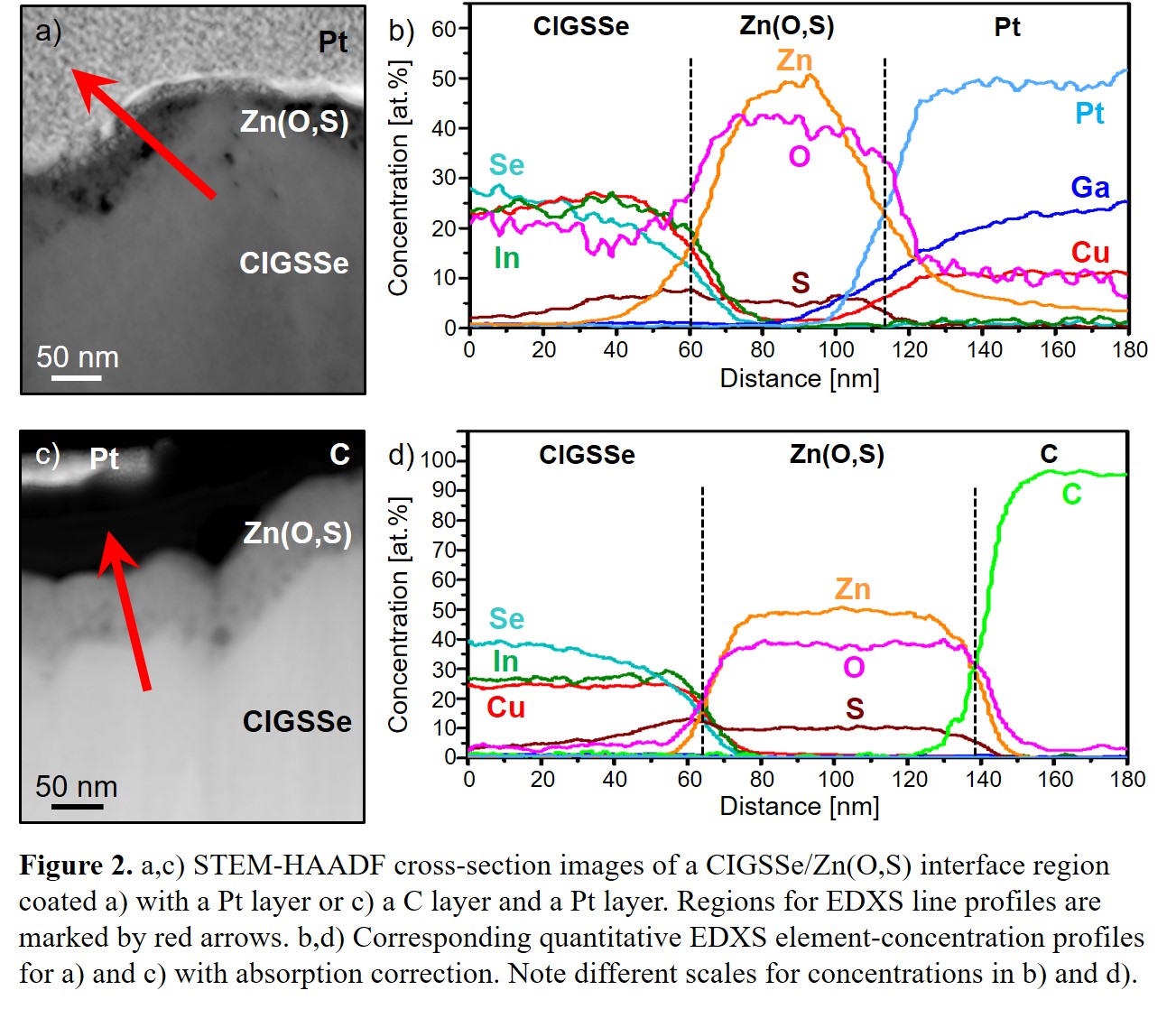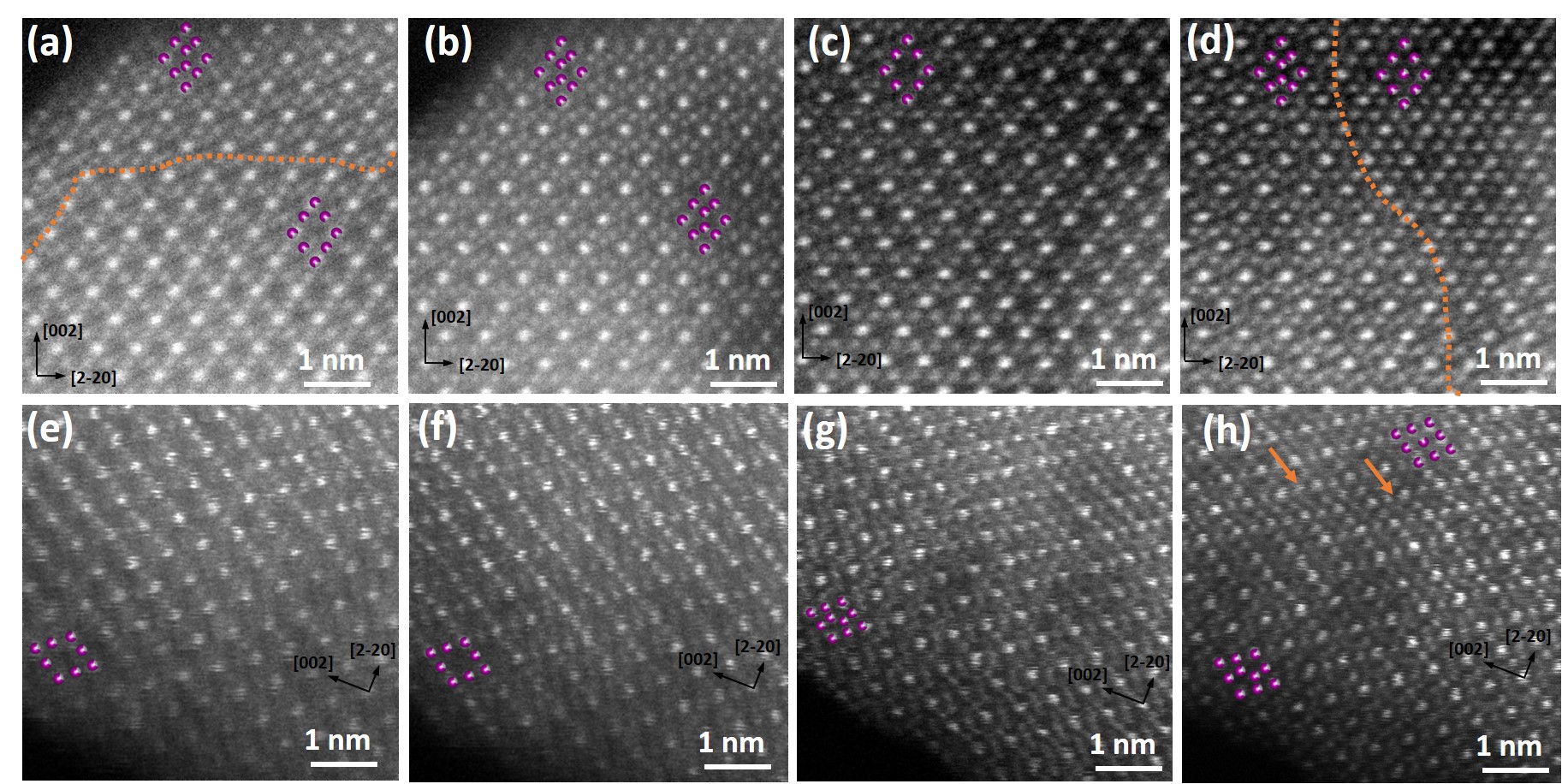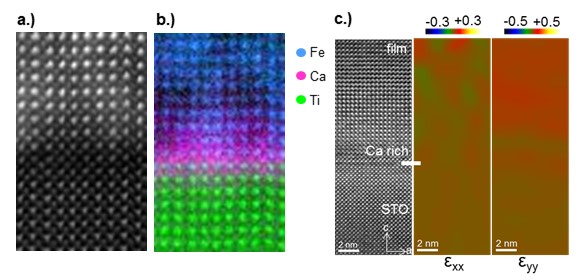Abstract Text
Within this abstract we present a high-resolution chemical analysis of the second order Ruddlesden-Popper phase Ba1.1La1.9Fe2O7 using EDX and EELS in STEM, as well as simulations for quantifying the lanthanum and barium concentration on each atom column.
Lanthanum barium ferrates have auspicious properties as triple conducting oxides (proton-, oxygen ion- and electron-conducting) and therefore are promising new materials for future applications in protonic ceramic fuel cells, electrolyser cells or membranes for hydrogen separation [1]. However, mass and charge transport as well as defect chemistry are only partially understood at this point. These properties are influenced by the crystal structure and the distribution of the elements within this structure.
In this work, we show an element analysis of the second order Ruddlesden-Popper phase Ba1.1La1.9Fe2O7. In addition to characterizing the crystal structure over a large material volume by X-ray diffraction (XRD), we used scanning transmission electron microscopy (STEM) in combination with electron energy loss spectrometry (EELS) and energy-dispersive X-ray spectrometry (EDX) to locally analyse the elemental distribution down to the atomic scale via high-resolution elemental maps.
Both La and Ba occupy the A-sites within the crystal. Our experiments show that La favours the 9-fold coordination sites in the rock salt layer, whereas Ba prefers the 12-fold coordination sites within the perovskite block (fig. 1a). Moreover, we recognised fluctuations in the Ba/La distribution on each atom column within both rock salt and perovskite layers (fig. 1b). In order to quantify the EELS spectrum images, one needs to be aware of signal contributions stemming from neighbouring atom columns, which may have serious influence due to the in-zone-axis conditions during data acquisition. Hence we simulated the La and Ba EELS signal using inelastic multislice calculations based on Slater-type orbitals and analysed the contributions coming from either the investigated atom column (on-axis signal) or the neighbouring atom columns (off-axis signal). In doing so, we are able to estimate the off-axis contributions to the experimentally determined signal and therefore quantify the La and Ba concentrations on each atom column. A previous work on the nominal material Ba1La2Fe2O7 shows similar behaviour when it comes to the preferred site of La and Ba in the rock salt and the perovskite layers, respectively [2]. We additionally revealed that (in terms of crystal structure) equivalent atom columns within either the rock salt layer or the perovskite layer do not exhibit distinct La/Ba ratios but a broad variation in concentration.
The cation diffusion within the crystallites and the new insights on cation ordering in Ba1.1La1.9Fe2O7 further contribute to the understanding of mass and charge transport properties in order to systematically design new materials for intermediate temperature protonic ceramic fuel cells [3].
Figure 1: a) The EDX elemental map depicts the distribution of La, Ba and Fe in the second order Ruddlesden-Popper phase Ba1.1La1.9Fe2O7 in [100] orientation. b) and c) La and Ba intensity maps evaluated per atom column illustrate the intensity variations on equivalent atom columns.
References
[1] R Zohourian et al, Advanced Functional Materials 28 (2018), 1801241
[2] NNM Gurusinghe et al, Materials Research Bulletin 48 (2013), p. 3537–3544
[3] The support of the Austrian Research Promotion Agency FFG (No. 853538), the Klima- und Energiefonds within the program "Energieforschung (e!MISSION)", the European Union Horizon 2020 programme (grant 823717–ESTEEM3) and the Austrian Science Fund FWF (No. I4309-N36) is gratefully acknowledged.

